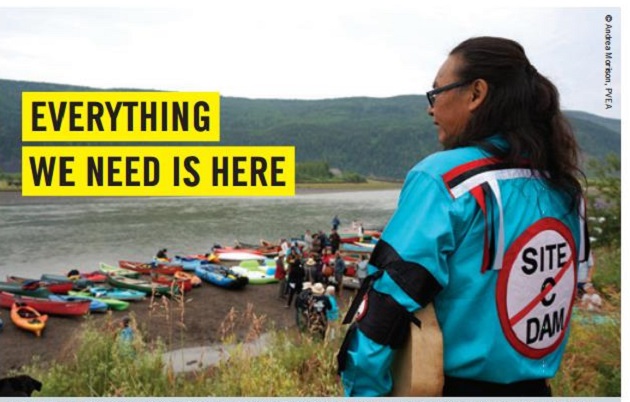BC Hydro said it is pushing through with it $9-billion, hydroelectric megaproject on British Columbia’s Peace River despite mounting demands to halt it because the project will destroy ancestral burial grounds as well as traditional hunting of fishing sites of indigenous people.
Amnesty International (AI) has recently released a report saying that BC Hydro’s Site C project would flood more than 80 kilometres of the river valley, stretching from Fort St. John and its tributaries. The report, titled The Point of no Return, is just one of the latest calls for suspension of the project.
“The Peace River Valley in northeast British Columbia is a unique ecosystem and one of the very few areas in the region that so far has been largely preserved from large-scale resource development,” the human rights advocacy group said. “First Nations and Métis families and communities rely on the valley for hunting and fishing, gathering berries and sacred medicine, and holding ceremonies. Their ancestors are buried in this land.”
However, BC Hydro reasoned that “all major infrastructure projects have environmental impacts” and that “Site C is no different.” Many of the environmental impacts can be addressed through careful project planning, comprehensive environmental and community mitigation measures, and ongoing monitoring during construction and operations.
The crown corporation also maintained that it has been holding “meaningful consultations” with indigenous people living in the area.
“The home that I know won’t be there anymore, and then, where will we have?” Human Impact of #SiteC https://t.co/OXqb17z8KM via @YouTube
— William Hanlon (@BillyOHanlon) August 24, 2016
“BC Hydro has been consulting and engaging with Aboriginal groups about Site C since 2007 and continues to have many positive discussions with Aboriginal groups affected by the project,” a statement from the crown corporation. “BC Hydro has reached agreements, or terms for agreements, with a number of Aboriginal groups, including Dene Tha’ First Nation and McLeod Lake Indian Band. Of the 13 Aboriginal groups that BC Hydro continues to be engaged with, only two First Nations remain opposed to the project in court.”
However, the West Moberly and Prophet River First Nations have earlier gone to court to seek protection of their traditional lands. Their efforts were supported by the Union of BC Indian Chiefs, the Assembly of First Nations and even local farmers and other landowners in the Peace Valley.
BC Hydro is not waiting for the resolution of the outstanding legal issues that are still before the courts, according to AI.
The organization said that back in 2015, the provincial utility began clear-cutting large areas of the Peace Valley floor.
The destruction of plant and animal habitat is at the heart of the First Nations legal challenge to the project. Early this year, a small group of residents that called themselves Treaty 8 Stewards of the Land, set up a camp at a historic site in the path of the logging. Their actions temporarily stopped the logging, but a BC court has ordered the campers to leave the site.
BC Hydro said it is committed to working with Aboriginal groups to address their concerns and that the crown corporation has even committed $130 million in Site C procurement opportunities for Aboriginal companies. “The Site C Clean Energy Project is the most studied project in BC Hydro’s history. As part of the environmental assessment, BC Hydro undertook multi-year studies to plan the project and to identify and assess potential project effects and proposed comprehensive mitigation measures. All of this information was documented in approximately 30,000 pages in the Site C Environmental Impact Statement (EIS) and associated documentation,” BC Hydro’s statement said.
Once complete, Site C will provide clean, reliable and cost-effective electricity for more than 100 years. Without Site C, B.C. is forecast to have an eight per cent capacity deficit and a two per cent energy deficit within 10 years – equivalent to the power needs of 100,000 homes, according to BC Hydro.
The provincial utility also pointed out contends that AI failed to mention in its report that four judicial reviews (two by the federal court and two by the B.C. Supreme Court) of the environmental approvals of Site C have been dismissed.
But the B.C. government has been criticized for exempting the Site C project from scrutiny by the BC Utilities Commission to determine if the project was serving the interest of BC taxpayers.
Gwen Johannson, mayor of the District of Hudson Hope, has been advocating for oversight of the BC Utilities Commission, also argues that there is no need to rush the Site C project.
She said that by 2024 when the project is expected to begin providing electricity, there may be advances in less disruptive technologies such as wind, solar and geothermal power that could provide alternative energy sources.
Even BC Hydro admits that it is not building the dam to for current needs but for demands expected to materialize 15 to 20 years from now.
“We decided to build a dam, and then we went looking for where we could use the power,” she was quoted as saying. “It seems to me that the process is backwards.”



